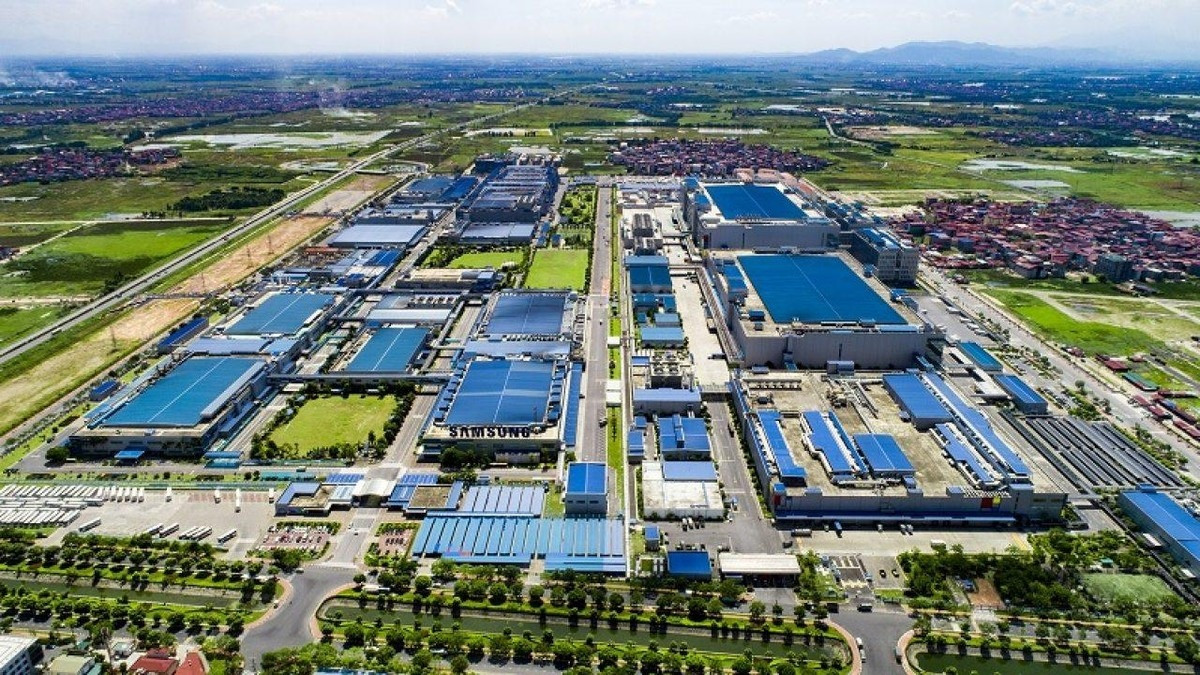

Statistics compiled by the Foreign Investment Agency indicate that FDI inflows into Vietnam by the end of July reached US$13.43 billion, of which the real estate sector attracted US$1.53 billion, ranking third among industries and fields.
Experts say, the demand for industrial land for lease is set to continue to become hectic this year, despite numerous challenges faced by the entire real estate market. This can be seen in a high occupancy rate in old industrial parks along with limited supply sources for industrial land.
In fact, following post-pandemic reopening, international financiers have conducted surveys on locations, signed memorandums of understanding (MOU), and contracts relating to land lease at industrial parks (IP).
In the first quarter of the year, a delegation made up of 52 firms from the United States with many big names such as Boeing, Coca-Cola, Meta, SpaceX, Netflix, and Apple arrived in Vietnam to seek business opportunities, showing their strong trust in the investment climate of Vietnam. Vietnam has emerged as the world's new production hub in the fields of electronics, technology, or high-value industries.
Although FDI investment this year has slowed down due to the global economic recession, the demand for the Vietnamese industrial real estate segment remains high thanks to its advantages in labour, population, the development of infrastructure, and incentives for foreign investors, as well as the Government's efforts in maintaining macroeconomic stability.
Tyler Nguyen, head of the Institutional Banking at Maybank Investment Bank, reveals that there are bright prospects ahead for FDI inflows into Vietnam in the second half of this year and beyond.
The fact is that more than 200 Korean investors accompanied President Yoon Suk Yeol to Vietnam during the president’s recent visit to Hanoi, with many of them keen to continue increasing investment in the country.
Specifically, LG Group has committed to investing an additional US$1 billion in the northern port city of Hai Phong, bringing its total investment in h city to US$2 billion, said Nguyen.
Back in July, Japan’s Sumitomo Group unveiled a plan to develop an industrial park worth US$400 million in Thanh Hoa.
Meanwhile, Foxconn Singapore Pte Ltd recently received an investment license in order to invest US$246 million in new manufacturing plants throughout the northern province of Quang Ninh.
According to John Campbell, deputy director and head of Industrial Services Division of Savills Vietnam, the Vietnamese industrial real estate market is benefiting from the trend of diversifying the global supply chain, the stable exchange rate of its currency (VND) against the US dollar, along with attractive corporate tax rates.
Most notably, multinational companies are currently looking for places to relocate from China, a factor which has opened up a wealth of opportunities for the Vietnamese industrial real estate market.
In its latest report Cushman & Wakefield Company points out that two industrial parks in the northern province of Hung Yen offered 238 hectares of industrial parks for lease in the second quarter of this year.
Trang Bui, general director of Cushman & Wakefield Vietnam, comments that thanks to the available industrial land with reasonable rental rates, the northern province continues to maintain advantages in terms of location and potential as a means of attracting investment.
However, at present, the supply source of industrial land remains limited as the occupancy rate is always high in IPs located in provinces, such as Binh Duong, Dong Nai, Bac Giang, and Hai Duong.
In a bid to facilitate stable supply source of industrial real estate, Hai Duong has recently been approved by the Prime Minister to invest in six new industrial parks.
The supply source is therefore expected to create huge opportunities for investment attraction, especially in the context that many foreign businesses are seeking to shift investment flows into the Vietnamese market.
Moreover, northern provinces have urgently completed a master plan and development orientations to welcome foreign investors.
As a result, the industrial park land supply source will increase significantly in the period from 2023 to 2026, likely to reach nearly 5,000 hectares, according to Cushman & Wakefield Company.
Source: VOV